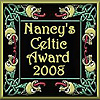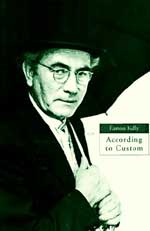 
Custom Search
|
|
"People will not look forward to posterity who never look backward to their ancestors."
-Edmund Burke Shops Ireland Himself/Herself Write to Us Readers Write..Links/Link to Us Advertise with us |
In My Father's Time
by Mattie Lennon 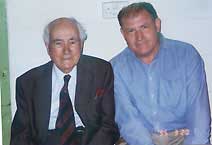 It was 1959. The National Council for The Blind of Ireland gave my visually impaired mother a wireless. It was our first radio. At the time my contemporaries were clued in to the highlights of Radio Luxemburg and the Light Programme. But, always one to live in the past, I had a preference for the folk programmes on Radio Eireann. My adrenalin was really let loose by the prologue to one in particular: It was 1959. The National Council for The Blind of Ireland gave my visually impaired mother a wireless. It was our first radio. At the time my contemporaries were clued in to the highlights of Radio Luxemburg and the Light Programme. But, always one to live in the past, I had a preference for the folk programmes on Radio Eireann. My adrenalin was really let loose by the prologue to one in particular:The rick is thatched The fields are bare, Long nights are here again. The year was fine But now 'tis time To hear the ballad-men. Boul in, boul in and take a chair Admission here is free, You're welcome to the Rambling House To meet the Seanachi.The Seanachi was, of course, Eamon Kelly. I was to follow Eamon's stories, on the air, and later in Dublin theatres, through his one-man shows, for decades. His trademark introduction was: "In My Father's Time" or "Ye're glad I came." In between tales of "The King of England's son" and "The Earl of Baanmore" he would tell his own life-story. And those who knew his style could always differentiate between the fact and the fiction. He was born in Rathmore, Co. Kerry, in March 1914. In his autobiographical work "The Apprentice" he tells of how the family moved when he was six months old. He was brought to Carrigeen on Maurice O'Connor's sidecar. (Of course when he'd be wearing his Seanachi's hat he'd tell you he remembered it). Eamon grew up in a Rambling House and in later life said: " ... my ears were forever cocked for the sound that came on the breeze. It wasn't the Blarney Stone but my father's house which filled me with wonder". He was only a child when this country gained independence but he had his Kerry ear cocked long before that to accumulate stories such as this: " 'Will I get in this time' the sitting MP said once to one of our neighbours, coming up to polling day. 'Of course you will' the neighbour told him. 'Didn't you say yourself that it was the poor put you in the last time and aren't there twice as many poor there now?' " Eamon didn't lick his storytelling ability off the ground. He said of his father that he was " ... a friendly person, a good talker. Neighbours and travelers were attracted like moths around a naked flame into his and my mother's kitchen". Their kitchen had " ... all the rude elements of the theatre; the storyteller was there with his comic or tragic tale, we had music, dance, song and costume". When he left school Eamon became apprentice to his father who was a master carpenter and wheelwright. The young apprentice missed nothing; seventy years on he could mimic a verbose mason who described how to put a plumb-board against the rising walls to "ascertain their perpendicularity". He also began taking a correspondence course with Bennett College in England. Then it turned out that the architect of a hotel enlargement project that he was working on was the craftwork teacher at the local Technical School. Eamon enrolled for a night course. The teacher's name was Micheal O' Riada and, in his autobiography, Eamon told how he " ... was the means of changing the direction of my footsteps and putting me on the first mile of a journey that would take me far from my own parish. He taught me and others the craft of wood and in time we passed examinations set by the technical branch of the Department of Education in carpentry, joinery and cabinet making. He taught the theory of building and how to read plans: he taught solid geometry which holds the key to the angles met with in the making of a hip roof or staircase". No matter how far from home Eamon was working he cycled two nights a week to Tech. He was soon to learn that Micheal O'Riada's interests were not confined to sawing and chiseling. He introduced his pupils to books, writers and the theatre. On the head of this Eamon went to see Louis Dalton's company, at the town hall, in "Juno and the Paycock". "It was my first time seeing actors on a stage and the humour, the agony and the tragedy of the play touched me to the quick". He was mesmerized by the actors and " ... their power to draw me away from the real world and almost unhinge my reason long after the curtain had come across". Micheal O'Riada was impressed with Eamon's reaction to the theatre. He discussed O'Casey, Synge and Lennox Robinson with the young carpenter and advised him if he ever went to Dublin to go to the Abbey Theatre. Mr. O'Riada also told him that if he kept making headway in his studies and passed the senior grade in the practical and theory papers he would enter him for a scholarship examination, to train as a manual instructor, in Dublin. Since Eamon had left school at fourteen he also had to do additional study in English, Irish and Maths. He passed his scholarship examination, and the interview in Dublin, with flying colours. He trained and worked as a woodwork teacher for years until he became a full time actor. His first acting role was as Christy Mahon in "The Playboy of the Western World" along with the Listowel actress, Maura O'Sullivan. He would later marry, and spend the rest of his life, with Maura. They moved to Dublin and Eamon was employed by the Radio Eireann Repertory Players and later by the Abbey Theatre Company. He drew large audiences in villages during the '50s as he traveled around Ireland with his stories. He was to spend more than 40 years as a professional actor. Working with the top actors and leading producers of his day, he performed in New York, London and Moscow. As a storyteller, his vivid and evocative descriptions are unsurpassed. Whether it was about an emigrant-laden train gathering speed before fading from view at Countess Bridge or sparks flying when the blacksmith struck red hot iron, nobody could tell it like Eamon. Once, in the Brooklyn Academy, while telling one of his famous stories he mentioned an Irish town and drew a graphic word-picture of emigrants at the station. From the audience he heard; "Divine Jesus" and a man crying. Ever the professional, Eamon instantly changed gear, swung to comedy and in seconds had the homesick exile laughing. Watching him on the stage, the Paps-of-Dana and Dooncorrig Lake almost materialized around you. There was a temptation to look up for the rising ground above Barradov Bridge. In the Peacock Theatre in the 1980s, you were standing beside the young Eamon Kelly as he made a Tusk Tenon at the workbench beside his father or walked barefoot on the submerged stepping-stones with his first-love, Judy Scanlon. As Anette Bishop described it in the Irish American Post: "It's a case of the past returning to raise a charming blush on the cheek of the present". Everything Eamon Kelly did was tried, tested and honed to perfection. And he always expressed appreciation of the crafts, skills and talents of others. "The correct actions of a craftsman sawing, planning or mortising with the chisel were as fluid as those of an expert hurler on the playing field". When rehearsing for Seamus Murphy's "Stone Mad", which he adapted as a one-man show, he spent days observing stonecutters at a quarry in the Dublin mountains. In the course of the show he "lettered" a stone on stage. With little or no interest in money himself, he was always on the side of the underdog and the marginalized. He was playing S.B. O' Donnell in "Philadelphia Here I Come" on Broadway, in January 1972, when he heard the tragic news of Bloody Sunday. There and then he decided to play his part in trying to rectify man's inhumanity; he became a vegetarian. Eamon was shy, by nature. And even in his eighties he would be, by far, the most nervous artist backstage. This was because he was a perfectionist. A year before he died I saw him in a hotel about to do a piece he had performed hundreds of times. With the utmost humility he asked a staff member about facilities to do a last minute rehearsal: "Do you have anywhere where I could talk to myself for a while?" While the great storyteller won't ever again stand on a stage or sit by the fire of a rambling house, his voice lives on. Rego Irish Records have brought out a video "Stories of Ireland, as told by Eamon Kelly" and a cassette "Eamon Kelly, the Irish Storyteller". (You'll find Rego Records at http://www.regorecords.com) Kerryman, Brendan O'Shea (O'Sheas Tailoring, Lower Gardiner Street, Dublin) told me the following story: At the end of September 2001, Eamon Kelly brought a suit in to Brendan for some alterations. The suit was fifteen years old. Prior to one of his trips to America, Eamon had it made by another Dublin tailor who left the jacket minus an inside pocket and the trousers without belt-loops or a back-pocket. Now, Eamon, the perfectionist, asked his fellow-Kerryman to rectify the sartorial omissions, which he did. When Eamon died on 24th October 2001, he had left detailed instructions with his wife, Maura, about the funeral arrangements and which suit he wanted to be laid out in. Yes, you've guessed it! Did the man who wrote so lovingly of Con-the-tailor, who made his first Communion suit, and who had portrayed an unforgettable tailor in "The Tailor and Ansty" want to somehow, bring the work of a Kerry tailor out of this world with him? I don't know. And neither does Brendan O'Shea. As his coffin left the church, the Congregation gave a round of applause. The show was over and this time there was no encore. The final curtain had fallen on a one-man show, performed by a man of many parts. Actor, storyteller and writer, loving husband, devoted father and great Kerryman. Shortly before his death, while lecturing North American Literature and Theatre students in the art of storytelling, he said: "My journeying is over. If the humour takes me, I may appear in some Alhambra, where angels with folded wings will sit in the stalls, applaud politely and maybe come round after and say;' that was great' ". As he walked into that great Rambling House in the sky, can't you imagine the opening line?: "Ye're glad I came". NOTE: Our thanks to Mattie for his contribution; if you'd like to read more of his stories, you'll find them on his website, please click Mattie Lennon. BIO: 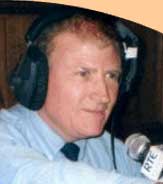 Mattie Lennon was born in the first half of the last century at Kylebeg, Lacken, Blessington, Co. Wicklow. He was not at any stage called "the black sheep of the family" mainly because he was (and is) an only child. He spent the first 25 years of his life at home on a small farm. He claims to identify with Patrick Kavanagh's "burgled bank of youth" (and says he is one of the few of his generation who knows how to make a bush-harrow). As a young fellow whenever he was blamed in the wrong he would compose a derogatory ballad about his accuser. There weren't many false accusations so he wasn't very prolific. Mattie Lennon was born in the first half of the last century at Kylebeg, Lacken, Blessington, Co. Wicklow. He was not at any stage called "the black sheep of the family" mainly because he was (and is) an only child. He spent the first 25 years of his life at home on a small farm. He claims to identify with Patrick Kavanagh's "burgled bank of youth" (and says he is one of the few of his generation who knows how to make a bush-harrow). As a young fellow whenever he was blamed in the wrong he would compose a derogatory ballad about his accuser. There weren't many false accusations so he wasn't very prolific.He was nicknamed "the Poet" but emphasises that the term wasn't always complimentary. He agrees that what is said behind ones back is their standing in the community and his favourite quotation is a comment made about him by a neighbour: "Wouldn't you think someone would tell him he's an eejit, when he doesn't know himself". He has spent most of the last thirty years in Dublin but when asked "Will you ever go back to Kylebeg"? the answer is always Joycean. When James Joyce was asked, in Trieste; "Will you ever return to Dublin?" he said; "I never left". Mattie Lennon has written articles (mostly humorous) for The Sunday Independent, The Irish Times, The Irish Post, Irelands Own, Irelands Eye, Kerry's Eye, The Wicklow People, The Leinster Leader as well as numerous on-line publications. He claims that he was once told; "You have the perfect face for radio" and he compiled and presented his own programmes in the "Voiceover" series on RTE Radio One. He has presented ballad programmes on KIC FM and is currently doing a Saturday morning ballad show at 11.03AM, on Liffey Sound 96.4 FM. (You can listen to it on the Net. Go to www.liffeysound.com and follow the links) He also does pre-recorded programmes for other stations. One such programme is "The Story And The Song" in which he plays a number of ballads, having first told the story behind each one. In 2005 his One Act Play, “A Wolf By The Ears” got a public reading in Teac Siamsa, Tralee. In 2006 he produced a DVD ,”Sunrise On The Wicklow Hills” and compiled a book of Dublin Bus-workers writings, “There’s Love And There’s Sex And There’s The 46A ”. He was in the final of the “Eamon Kelly Story–telling Competition” at Listowel Writer’s Week in 2007. Most years since 2000 he has been in the final of the Sean McCarthy Ballad Competition in Finuge. He still writes the occasional ballad (not all of them fit for human consumption). | 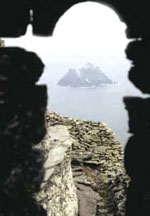 The Islands The Islands
There are hundreds of islands around the Irish coast. Achill is the biggest, the Arans the most romantic; Skellig Michael the most dramatic and Tory the most menacing - at least in legend. The Blaskets offer the most fertile ground for literature and Clare island is the most meticulously studied. But, whichever island you may visit, you can be sure each of them has its own superlative. For example, Little Skellig off St. Finian's Bay in Co. Kerry, is known for its gigantic colony of white seabirds called gannets.
Content edited and adapted from the book "Ireland - Atmosphere & Impressions" by Dr. Christopher Moriarty. Photo Credits: Skellig Archway from Travel Publishing Click for More Culture Corner.
| ||||||||||
| All contents copyright © 2001 through 2011 inclusive - all rights reserved. March 4, 2011 | Irish Gifts Rollover button Images: Wedding LaRose, Kids Reading & Kitchen Apples and Tea from All Posters prints. The information provided on this site is offered as-is, without warranty. This site's owners, operators, authors and partners disclaim any and all liability from the information provided herein. Any trademarks or registered trademarks on this site are the property of their respective owners. | |||||||||||









